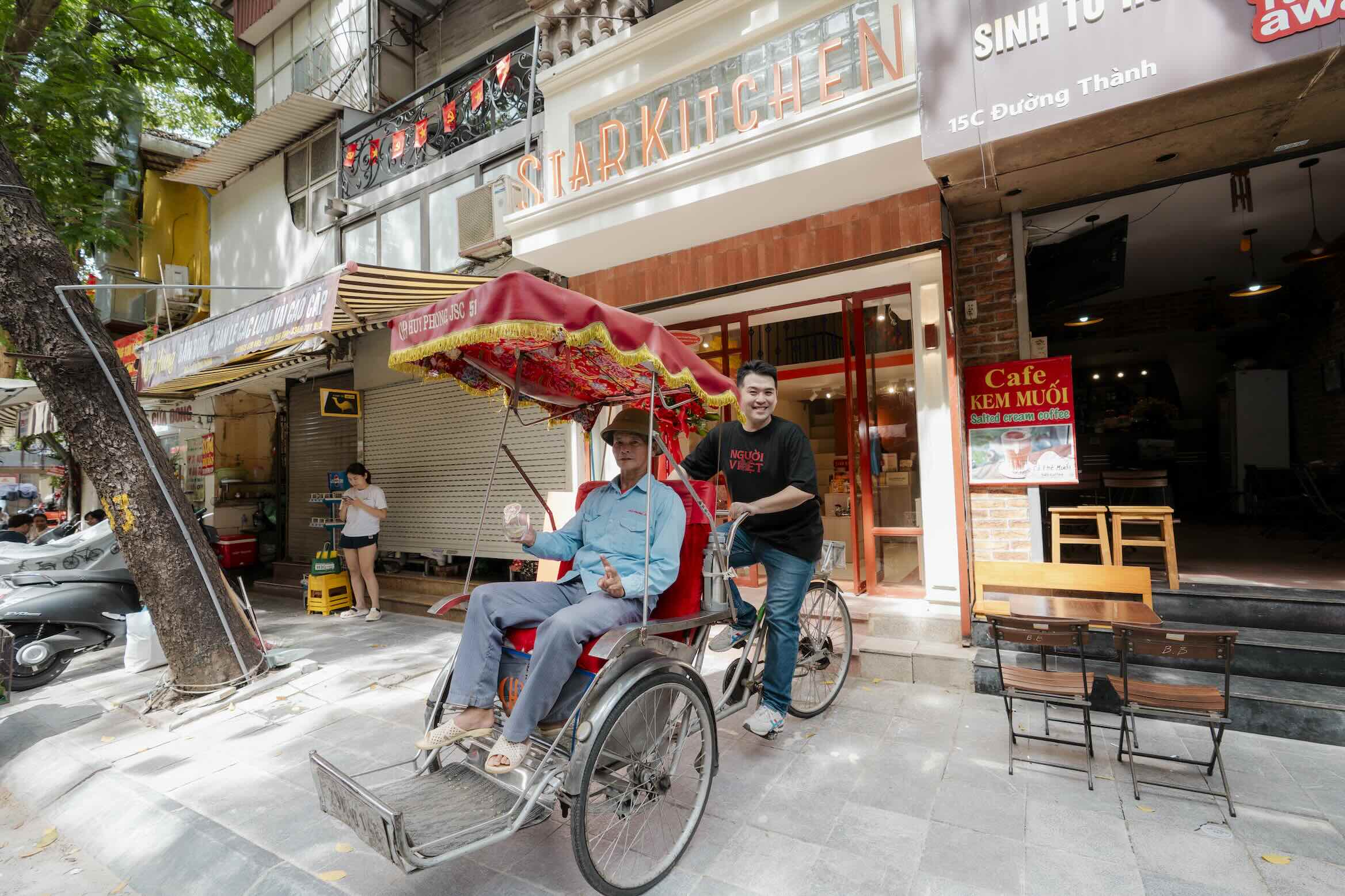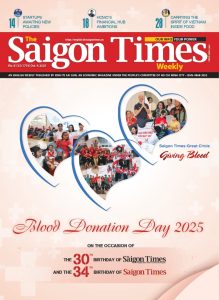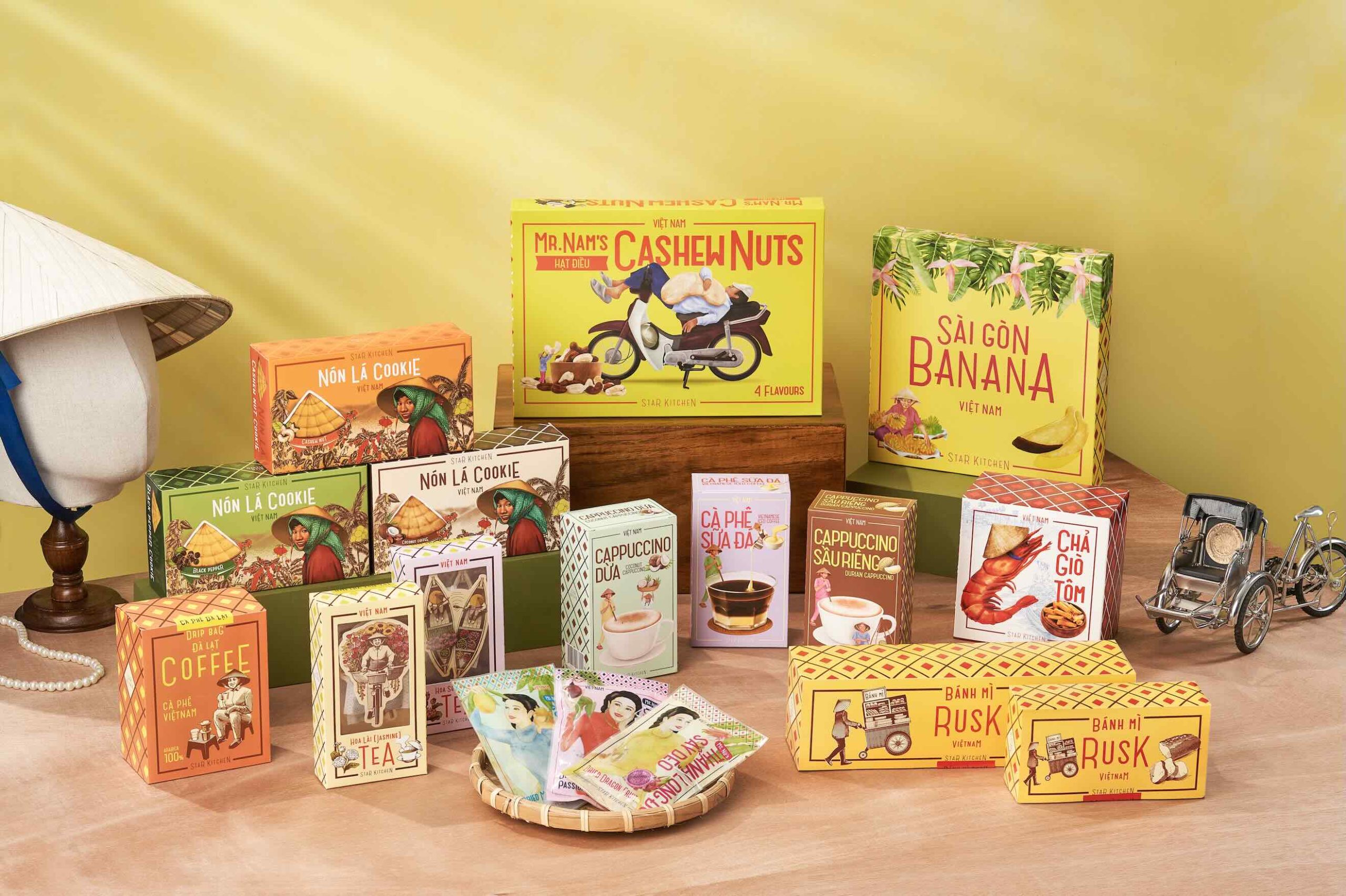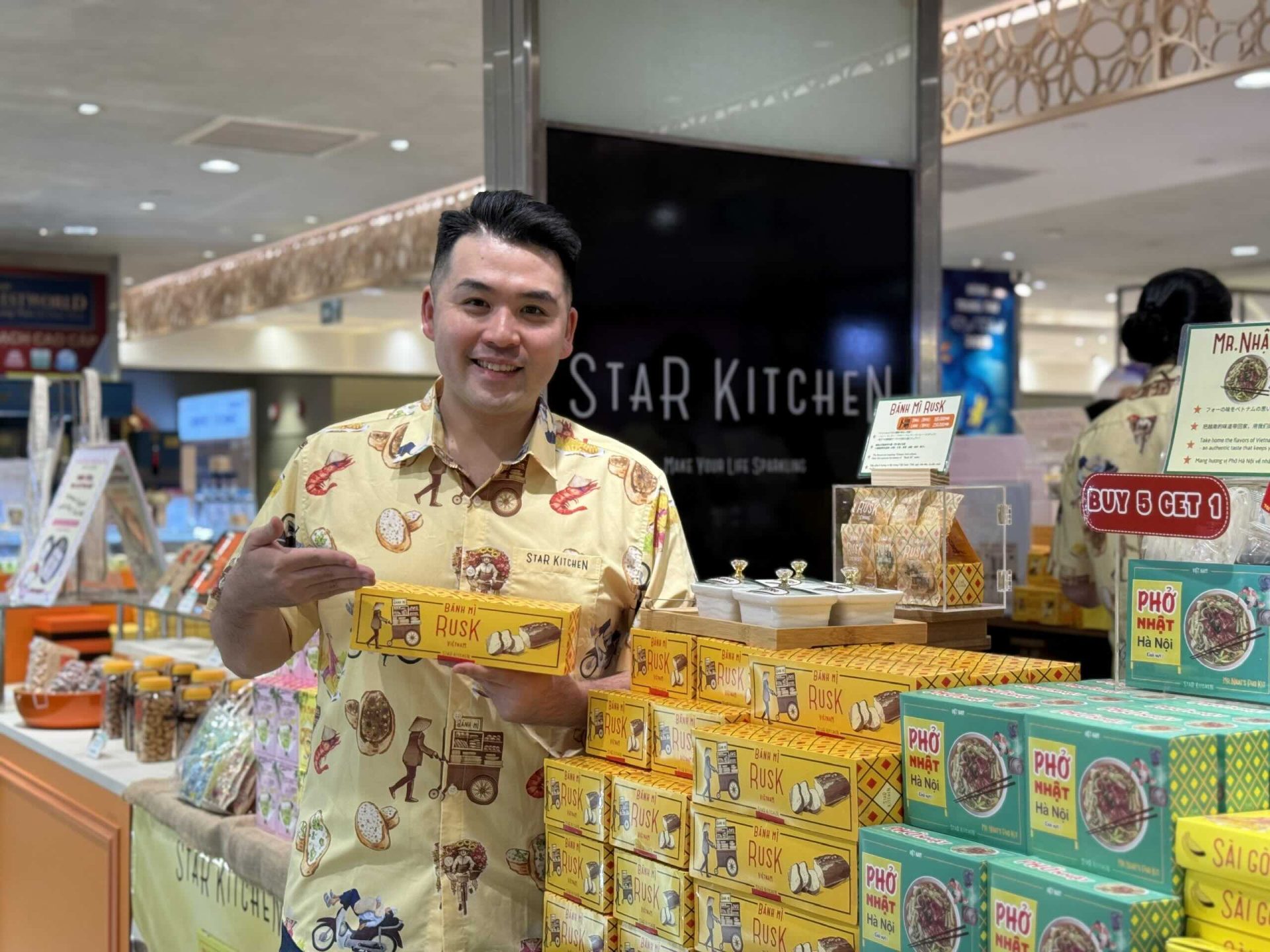Leaving behind a consulting career at IBM, Japanese entrepreneur Yuya Arashima came to Vietnam in 2012 in search of opportunities and found a place that not only offered business potential but also a strong sense of community and culture. Over the years, his ventures have evolved from cooking classes to souvenir products, with a mission of bringing Vietnamese food and values to the world.
The Saigon Times: Could you tell us when you first came to Vietnam, and what led you to decide to stay?
Yuya Arashima: Since I was a child, I always wanted to have my own business, to create something of my own. After graduating, I started working at IBM as a business consultant. I stayed there for about five years, which gave me valuable skills and experience. But at some point, I felt it was time to challenge myself—to pursue my dream of creating my own value and my own business. In 2012, I left IBM and began traveling across Southeast Asia—from Singapore to Myanmar—looking for opportunities. Finally, I came to Vietnam, and that is where I found the right conditions to begin. The market was just starting to grow and felt full of potential, and I also connected strongly with the people here. That combination convinced me to stay.
You mentioned that Vietnam felt more “potential” ten years ago. What do you mean by that?
Ten years ago, competition was still limited. For example, if someone wanted to open a ramen shop in HCMC back then, even without much experience, it was possible. Customers were simply excited to have ramen, and that gave time to improve step by step.
But now, established Japanese brands have entered the market. Competing with them is very difficult if you don’t already have a strong background in that industry. Back then, there was no Starbucks, and many international chains had not yet arrived. For small or medium startups like mine, opportunities were much greater.

When you traveled through Southeast Asia before choosing Vietnam, how did you compare the countries? What stood out about Vietnam?
In places like Singapore, the market was much smaller and more competitive, and the cost of starting a business was very high. Social connections also felt weaker; people mostly cared about themselves.
In Vietnam, I felt something different. Even today, I still sense that people here want to grow together. There’s a strong community spirit. In Japan, society has become more independent, and traditions have faded. For example, when I was a child, the New Year was a big family gathering, similar to Tet in Vietnam. But over the years, that has disappeared in Japan. Here, I see families still living closely, celebrating together, and keeping those connections alive. That really impressed me.
You once tried to introduce Mother’s Day and Father’s Day promotions in Vietnam. What was that experience like?
Yes, I suggested to my staff that we run promotions for Mother’s Day and Father’s Day, because in Japan, these occasions are particularly important. People often hesitate to express gratitude directly, so those special days are used as a chance to give gifts and say thank you.
But my Vietnamese staff looked at me and said, “Boss, why do you need a special day? We talk to our parents every day.” That shocked me, in a good way. It showed me how different the culture is here—the everyday closeness between family members is something very natural.
In Vietnam, many parents call their children every day, even after they move out. How do you see that?
At first, I thought it was too much. In Japan, if there is no news, parents usually don’t call. But over time, I began to see the beauty in it. Life is uncertain—no one knows what tomorrow will bring—so Vietnamese people live very much in the present. They maximize joy in everyday life.
I often notice how Vietnamese people find fun in small things. For example, they will take photos of a flower for 30 minutes, whereas in Japan, people might simply say, “Okay, good” and move on. This ability to enjoy the moment and share it with others makes life here very lively and active.
You work in the food industry. What do you love most about Vietnamese food?
I really love Com Tam. The pork quality here is excellent, and the grilling with charcoal gives it a unique flavor. In Japan, charcoal grilling is very expensive, reserved for high-end restaurants. But here, it’s part of everyday street food.
I also like the contrast with Japanese experiences. For instance, when Vietnamese workers in Japan are treated by their boss to a special charcoal BBQ, they don’t see it as special at all—it feels cheap compared to what they eat back home. That always makes me smile.
Do you see similarities between Japanese and Vietnamese food?
Yes, I think so. And Cao Lau, from Hoi An, also reminds me of Udon noodles, though the soup is lighter. But in general, Vietnamese food culture is very different from neighboring countries. It is less salty, less oily, and lighter.
I’ve noticed that while ramen or Tonkatsu are popular in places like Thailand or Malaysia, in Vietnam, many people find them too heavy or greasy. That makes Vietnam’s food culture stand out as unique.

Vietnam is known for using many herbs in cooking. You even developed products with coriander. Why did you choose that?
For Japanese people, herbs are a symbol of Vietnamese cuisine. Among all the herbs, coriander—or “ngò”—is the most recognizable and easiest to understand. We even call it “pak chi” in Japan.
Honestly, coriander is not the best flavor for a cake product. Coffee or coconut goes much better with cake. But for me, it wasn’t only about taste. It was about representing Vietnamese culture through food. That’s why I chose coriander—to show something essential about Vietnamese cooking.
You first started with a cooking studio. How did that lead to your later products?
My first business in Vietnam was Star Kitchen, a cooking studio. I saw that entertainment and hobbies were limited here—people mostly went to coffee shops or shopping malls. I wanted to create something educational but also fun. So I introduced Japanese cooking classes, where people could learn and enjoy at the same time.
Later, I expanded into cakes. Our signature cakes included sakura and matcha flavors. But I quickly discovered that the cake market in Vietnam was very limited. Unlike Japan, where people eat fresh cakes often, here cakes are reserved mostly for birthdays or special events. That made it hard to grow the business.
Covid-19 forced me to rethink everything. I decided to close the cake business and shift to souvenirs, targeting foreign customers instead of locals.
What was the biggest challenge in adapting your products for Vietnam?
The hardest part was local eating habits. In Japan, children grow up eating cakes and cream, so it becomes part of everyday life. In Vietnam, people grow up with chè—sweet soups. That difference in habit made it very difficult.
Even when we tried to sell Japanese cakes in convenience stores, they didn’t sell well. In the end, I even produced chè for Family Mart! That taught me that success here requires observing carefully and adjusting to local culture.

Today, your souvenir products include cookies, coffee, and even pho. Could you tell us more about them?
Yes. For snacks, we have Banh Mi Rusk and Saigon Banana Cookies—an idea inspired by Tokyo Banana in Japan. We also produce tea and coffee, working with suppliers to create unique flavors.
Pho is an important product too. Many foreigners want to bring home pho as a souvenir, but in the market, options were limited and usually low-quality. So we created pho packs with better noodles, soup base, and packaging.
For me, taste is important, but in souvenirs, packaging and concept matter just as much. I want our products to tell the story of Vietnam and represent its culture in a way that people are proud to give as gifts.
Looking back, what has been the biggest lesson you learned in Vietnam?
The biggest lesson is that business is not just about products—it’s about culture and the people who make it work. When I first came, I wanted to share Japanese food with Vietnam. But the longer I lived here, the more I realized the world needs to know about Vietnamese food and culture.
So now, my mission is to introduce Vietnamese values to the world through something as simple and universal as food. That’s why every product we make is not just about taste, but about carrying the spirit of Vietnam inside it.
Reported by The Ky









